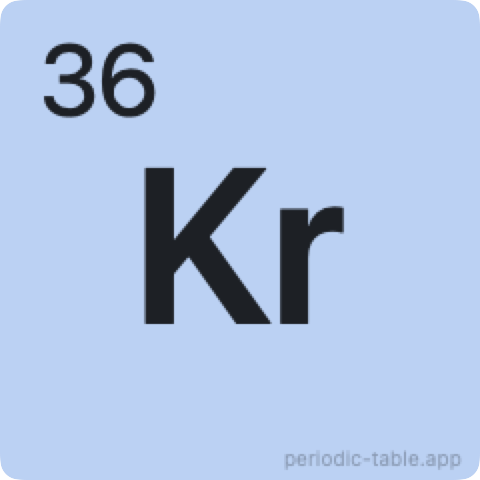This website uses cookies to analyze user experience and ads effectiveness.
We use Google Analytics and Yandex.Metrica to collect anonymous information only if you allow us to do so by clicking "I understand" button.
We use Google Analytics and Yandex.Metrica to collect anonymous information only if you allow us to do so by clicking "I understand" button.
 Krypton
Krypton
 Krypton
KryptonKrypton is a chemical element from the periodic table. It is a colorless, odorless noble gas that is found in trace amounts in the Earth's atmosphere. Krypton is most commonly used in fluorescent lighting and in high-intensity discharge lamps. It is also used to create the gas laser and is used in photographic flash lamps.
Download Chemistry application to view more information about the chemical element:
| Atomic number | 36 |
| Group | VIIIA |
| Period | 4 |
| Mass | 83.798 |
| Latin name | Krypton |
| Electron configuration | [Ar]3d10 4s2 4p6 |
| Oxidation state | 0, 1, 2 |